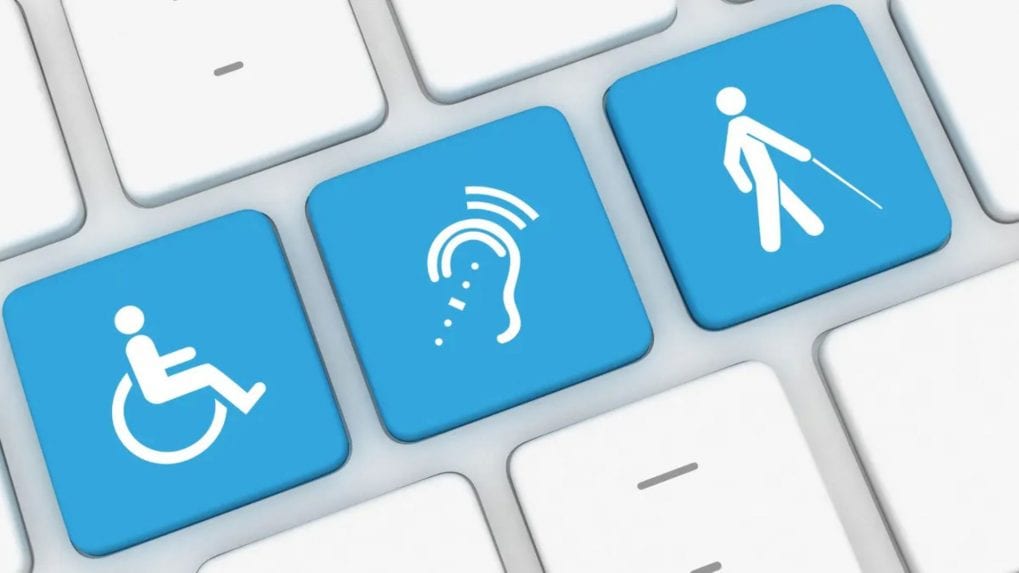Digital
Why OpenAI is hiring 100 ex-bankers: Inside the ChatGPT-maker's secret project to automate Wall Street's grunt work

In a country that prides itself on being a global technology hub, millions of Indians with disabilities continue to find themselves locked out of basic digital services, from ordering groceries to hailing a ride. Despite legal protections and growing awareness, many of the country's most popular consumer apps remain inaccessible.
Accessibility advocates say the problem lies not in the lack of standards, but in the lack of will. “Our approach has always been collaborative,” said Amar Jain, a lawyer and co-founder of Mission Accessibility, an advocacy group that works with digital platforms to improve access. “We explain the business case, the emotional need, the legal requirement. But often, there is no response, or just vague promises.”
Jain’s organization has engaged with several platforms. Some made early efforts but failed to follow through. Others remained in talks for over a year with limited progress. In several cases, litigation was the last resort.
The High Court in Delhi is currently hearing matters involving platforms accused of failing to comply with digital accessibility norms. Meanwhile, major ecommerce platforms have also drawn criticism for lacking basic accessibility features. While some global tech giants fare slightly better, their Indian subsidiaries often deflect responsibility. Jain notes that companies like Meta and Google have argued in court that liability rests with their overseas headquarters, a tactic familiar to regulators worldwide.
When Storyboard18 reached out to more than a dozen companies for comment, including Netflix, Amazon, Urban Company, Zepto and MakeMyTrip, only Spotify responded. In a statement, a spokesperson for Spotify said the company views accessibility as “a responsibility, not a feature,” and pointed to ongoing improvements such as screen reader compatibility, high-contrast settings, and adaptive audio options.
For Danish Mahajan, founder of the disability-led media platform Radio Udaan, the issue is less about capability and more about mindset. “Many apps become inaccessible after an update, not because of technical limitations, but because accessibility was never a design priority,” he said. “In countries where it’s legally enforced, the same companies do better. In India, they simply don’t face the same pressure.”
India’s own regulations are robust on paper. The Rights of Persons with Disabilities (RPwD) Act mandates digital accessibility and applies to all service providers, foreign and domestic, operating within the country.
“The law is clear: accessibility is not optional,” said Dr. Kalyan C. Kankanala, a lawyer specializing in intellectual property and disability rights. “Whether a company is based in India or not, if it serves Indian users, it must comply with Indian accessibility laws.”
Still, experts say enforcement lags behind. The gap between legal obligation and practical implementation remains wide. “Many apps would not pass even the most basic Web Content Accessibility Guidelines (WCAG) checks,” said Shashank Kapur, Director of Strategy & Growth at BarrierBreak, a digital accessibility consulting firm. “Until recently, most companies weren’t even aware of WCAG standards. But there is now growing momentum, partly due to court pressure.”
Some in the tech industry are beginning to take steps voluntarily. Apple, for instance, recently introduced “Accessibility Nutrition Labels” on its App Store, allowing developers to disclose features like VoiceOver support and captioning. Advocates hope similar transparency becomes standard across platforms. Srinivasu Chakravarthula, Director of Accessibility at Freshworks, believes accessibility should be framed not as a compliance issue, but as a design imperative that benefits all users.
“Dark mode, voice assistants, screen readers, these started as accessibility tools but are now used by everyone,” he said. “Accessibility improves the user experience universally. It’s not just for people with disabilities.”
Yet, Chakravarthula acknowledges that cultural inertia remains a powerful barrier. “It’s not a technical problem,” he said. “It’s a mindset problem.” Advocates argue that the next phase of India’s digital accessibility movement requires more than good intentions. They are calling for stricter enforcement, public reporting of accessibility status and penalties for non-compliance. Regulatory bodies, they say, must compel app stores like Google Play and Apple to vet or at least disclose app accessibility.
In a digital economy increasingly driven by environmental, social, and governance (ESG) commitments, many believe companies can no longer afford to treat accessibility as an afterthought.
“If inclusion is truly a corporate value,” Jain said, “then accessibility must be part of the product, not just the pitch.”
From purpose-driven work and narrative-rich brand films to AI-enabled ideas and creator-led collaborations, the awards reflect the full spectrum of modern creativity.
Read MoreIn a wide-ranging interview with Storyboard18, Sorrell delivers his frankest assessment yet of how the deal will redefine creativity, media, and talent across markets.